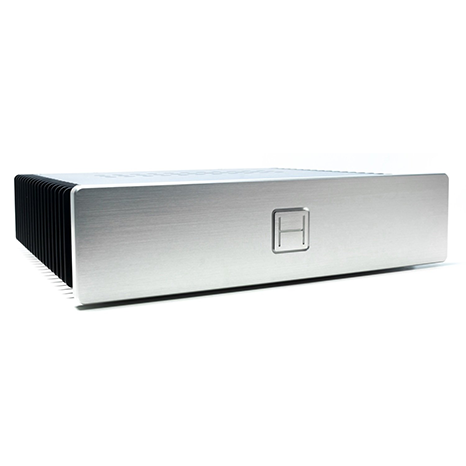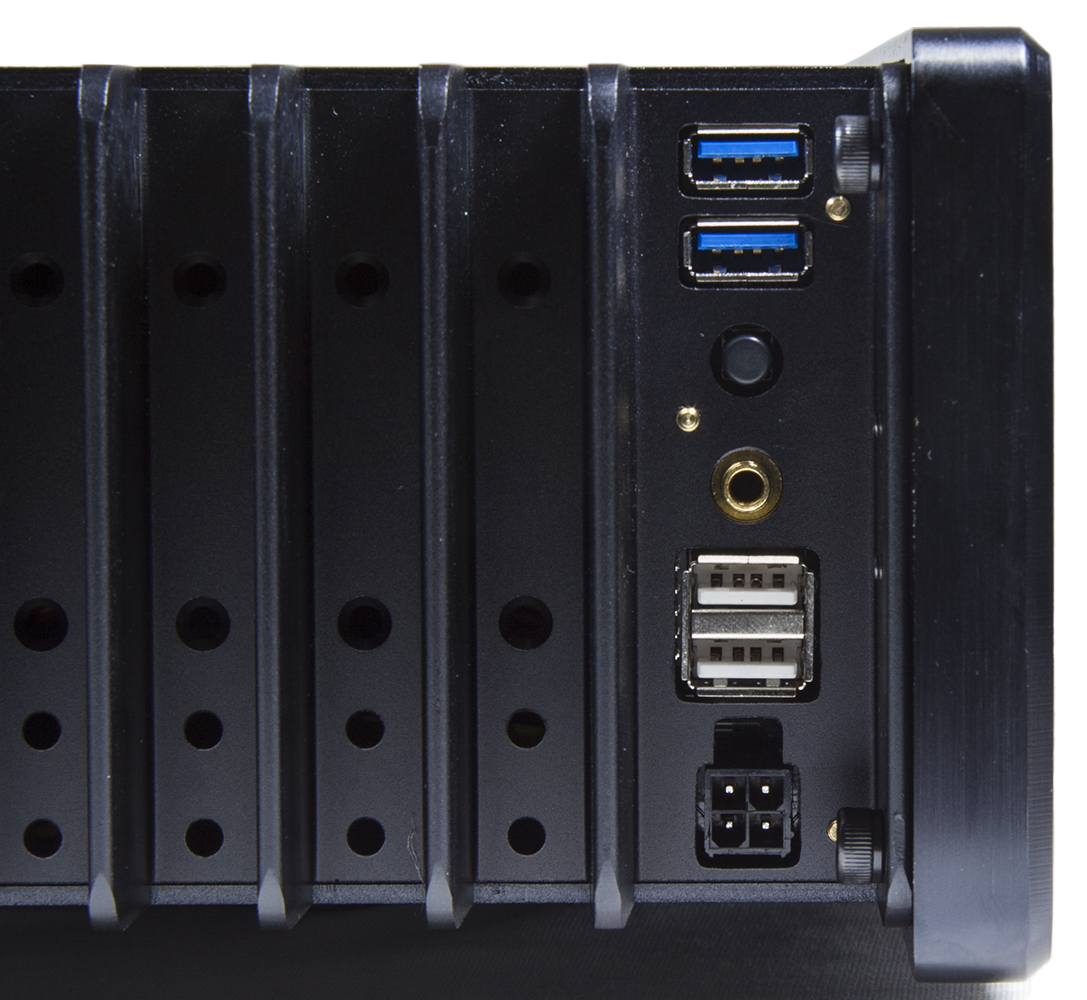Early Verdict
HDPLEX's H5 fanless case is a great option for individuals that are looking for and can afford a home theater case that is both silent and still able to support the same high performance gear that would normally be restricted to larger, louder cases.
Pros
- +
Premium construction • Passive cooling • Quiet design • Plenty of internal space for components
Cons
- -
Price • Amount of assembly required
Why you can trust Tom's Hardware
Specifications And Exterior
Now that CPUs with low TDPs are becoming powerful enough to replace their higher power counterparts in mainstream applications, passively cooled HTPC cases are starting to popup more and more. HDPLEX is one of several companies that produce high-end, fanless computer cases for those who want a truly silent HTPC. HDPLEX's newest flagship, the second generation H5, looks to set the standard for fanless HTPC cases, touting the ability to passively cool CPUs and GPUs with TDPs up to 95W. In addition to all of that cooling power, the case also manages to come with an incredible amount of internal space with support for full size PS/2 power supplies, ATX motherboards, as well as graphics cards up to 13.78" (350mm) in length.
HDPLEX sent us two of their H5 fanless cases to put to the test. The first is the retail version of the case that consumers will receive, and the second (pictured above) filled with hardware, which better demonstrates the case's features.
Specifications
The H5 itself is made out of 17 pounds (8 kg) of 6063 aluminum and comes with a black powder coated finish. The H5's faceplate has a brushed aluminum finish and is available in either silver or black.
Exterior Components
Unlike many of its HTPC and Mini-ITX counterparts, the H5 does not come preassembled but rather comes in a very large box full of parts. Although this may be potentially off-putting to some users, it also allows for the largest possible degree of customization during the build process, which lends to the H5's ability to fit so much, despite its form factor. In order to make the build process easier, the H5 comes with a very detailed manual outlining every step of the build process, and the case's parts are meticulously laid out in several trays, which makes finding individual parts easier.
The H5 starts out as a single plate of aluminum with various markings, which will eventually be used to assist with the installation of other components as the build progresses.
The sides of the H5 (along with the rest of the case) double as very large heat sinks, which help to dissipate the heat generated by the case's internal components. The case's left side handles heat from the CPU while the right side will optionally handle the heat from the GPU, if users choose to utilize the separate passive cooling system for the GPU. The side panels also serve as attachment points for the front panel's hinge system, as well as the front I/O connections.
The side IO panel on the H5 includes two USB 3.0 and two USB 2.0 connectors as well as a reset button, 3.5mm speaker jack and an output jack for powering AV accessories.
Get Tom's Hardware's best news and in-depth reviews, straight to your inbox.
The rear panel attaches to the back of the H5's side panels as well as the top and bottom of the case for a secure fit. In addition to the standard motherboard cutout, the rear panel also includes cutouts for a half height expansion card (no riser needed), as well as a single slot or double slot full height expansion card via a special riser card. The last cutout on the rear panel is for one of several adapter plates, which enable the use of several different types of power supplies.
The front panel itself is a single piece of brushed aluminum, and features a single cutout for the H5's power button. The front panel attaches to the case using a special hinge system, which depending on the installed options facilitates accesses to the optical drive as well as the 3.5" hot swap drive bay.
The second H5 that HDPLEX sent us came with a slim optical drive as well as two SSDs mounted in the drive brackets. Additionally, the bracket system includes mounting options for various other configurations including full size optical drives along with several combinations of hard drives and SSDs, depending on the type of power supply that's installed.
The power button is also made out of brushed aluminum, and for a small fee, HDPLEX provides its customers with an option to have a custom design CNC milled or laser etched on to the button's face. They were nice enough to include a customized power button featuring our logo with the review sample.
MORE: Best CasesMORE: Cases in the News
MORE: All Case Content
MORE: Cases in the Forums
-
leaded gas only I dig it.Reply
The case reminds me of a old David Hafler component power amp.
Disappointed that it doesn't support AMD CPUs MBs. -
chandra7979 Streacom has been making cases like this for a while (I have the FC5 EVO). This one looks like a taller FC5 (or a slimmer FC10). Could you maybe add metric dimensions to the specs table?Reply -
Chris Droste i feel like the thermal limitations of the passive air cooling, along with the cost, wind up making Intel's Skull Trail NUC a better purchaseReply -
cmiconi ReplyStreacom has been making cases like this for a while (I have the FC5 EVO). This one looks like a taller FC5 (or a slimmer FC10). Could you maybe add metric dimensions to the specs table?
I put them into the table originally, but it seems they never got published. I'll see if I can get them to update the table. -
RedJaron Definitely a nice case, but at $288 ( on mfr's site ) the thing just about costs more than everything that would go inside it. As much as I'd like one, I don't know if I could ever justify spending that much.Reply -
jsmithepa These are mainly for folks who must have a fan-less. If you have to add fans, for whatever reason/requirement, that's one expensive enclosure. I have one of their H1-ITX enclosure for a bedroom HTPC, the silence is precious.Reply -
jdwii Replyi feel like the thermal limitations of the passive air cooling, along with the cost, wind up making Intel's Skull Trail NUC a better purchase
I can't see how when it can handle a I7 since it can handle 95 watt CPUs not to mention a 750Ti would also be fine in it.
However i agree with the cost part.







